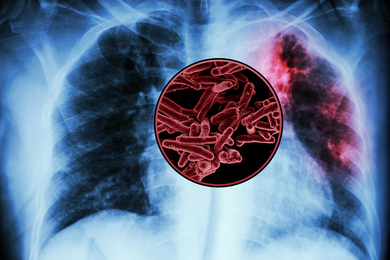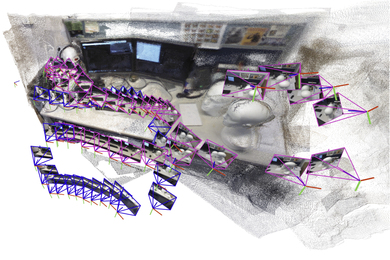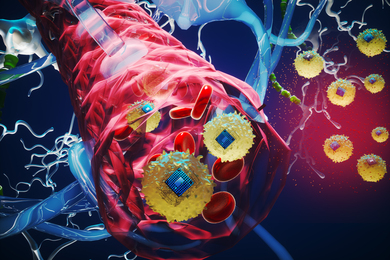In the new hit movie Erin Brockovich, the main character discovers a cover-up involving contaminated water that causes devastating illnesses among residents in a California community. A visiting scientist at MIT says that the chemical responsible, chromium (VI), is a growing global health issue.
Avi Bino, a chemistry professor at the Hebrew University of Jerusalem who is currently conducting research at MIT, spoke March 22 on "Models for the Interaction of Carcinogenic Chromium (VI) with DNA" as part of the MIT chemistry department's Inorganic Chemistry Seminar Series.
Chromium has three main forms: chromium (0), chromium (III) and chromium (VI). Some chromium (III) compounds are an essential nutrient that occur naturally in the environment. Chromium (VI) is a known carcinogen. Manufacturing or disposal of products or chemicals containing chromium, or burning of fossil fuels release odorless, tasteless chromium (VI) into the air, soil and water. Workers exposed to chromium (VI) have an increased risk of lung cancer; high doses have been associated with birth defects. "Chromium (VI) is bad news for biological systems," Professor Bino said.
Chromium is produced by burning coal and fossil fuels, stainless steel plating, chrome plating and leather tanning, among other processes. As a result of the efforts of the real-life Erin Brockovich, Pacific Gas & Electric Co. settled with plaintiffs in 1996 for $333 million, the largest settlement ever paid in a direct-action lawsuit in US history.
"Chromium is ubiquitous," Professor Bino said. "It is becoming more and more ubiquitous as we dump millions of tons of chromium all over the place. In the last decade, millions and millions of tons have been dumped into rivers, soil, the oceans and the atmosphere."
Some of the first plants in the country to produce chromium as a byproduct were in Madison County, NJ, and the chromium mud they created was dispersed all over the country, he said. It's estimated that 200,000 tons of chromium, 5 percent of which is chromium (VI), is in the New York area alone, he added.
"Releasing chromium (VI) into the atmosphere or onto the ground is totally forbidden, but for many years, some of those factories didn't comply," said Professor Bino, who noted that his expertise is not ecology or cancer. "The problem is not confined to a certain plant -- it is becoming global because of emissions to the atmosphere. Chromium (VI) comes down with rain and we breathe it." He cited estimates that 75,000 tons of chromium (VI) are emitted globally every year through manufacturing processes, plus about another 18,000 tons from natural sources such as volcanoes.
"Usually, chromium (VI) is reduced to chromium (III) and nothing happens," Professor Bino said. "The problem is when it gets into the body as chromium (VI). It can be absorbed through the skin or inhaled. Then it can penetrate the cell, bind to DNA and cause genetic damage."
Because exposure to chromium (VI) happens mostly from breathing workplace air or ingesting water or food from soil near waste sites or industries that use chromium, Professor Bino suggested that the air and water surrounding every chromium (VI)-emitting plant be monitored.
A version of this article appeared in MIT Tech Talk on March 29, 2000.





